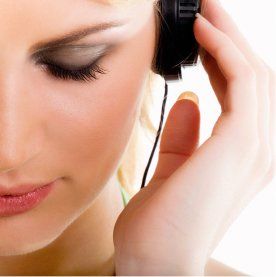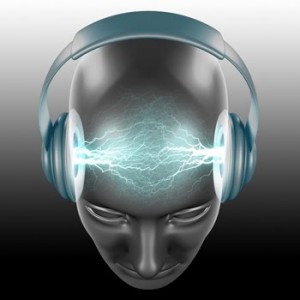Binaural Beats: Medication on your iPod?
Pharmaceuticals is one of the largest and most necessary industries on the planet. Every single person on Earth has something wrong with them; whether it be a headache, anxiety, or some sort of uncontrollable pain. We all require some sort of medication to help us cope with these problems.
The main issue is, that for each new drug that is introduced to the market, a particular company must spend anywhere from $100-400 million on research and development. These costs are often passed down to the consumer, and even with top-end insurance or medicare coverage, we’re forced to pay each time we re-up on our drug of necessity. Could there be a low cost alternative lurking in the air? There are those who believe so. Welcome to the amazing world of binaural audio.
Many of us have experienced the sensation of listening to a familiar song after a bad day and instantly gravitating to a better place. We all have those tunes that bring us back to a particular time, and we can feel exactly the same way as when we first laid our ears on them. Separated from those sensations, a school of thought is arising that believes certain sound waves administered to the brain can actually heal various ailments that one may face. These sound waves are called binaural beats or tones.
Binaural beats were first discovered in 1839 by German scientist Heinrich Wilhelm Dove, but not much attention was payed to the phenomenon until the late 20th century. These binaural beats are born when two sounds are relayed to an individual through headphones at two different frequencies. Frequencies are measured in hertz, which is sound cycles per second.
Due to the size of the human cranium, in order for binaural beats to be perceived, the two emitted sounds must each be under 1000 Hz, and not more than 30 Hz apart from each other. In reaction to these separate frequencies, the human brain actually produces a third frequency which is referred to as the beat. The beat frequency is equal to the difference in the hertz levels of the two sounds. A 420 Hz sound in one ear with a 400 Hz sound in the other would result in a beat frequency of 20 Hz.
A study on binaural beats by Dr. Gerald Oster in 1973, verified their existence in certain animals, as well as in humans. Oster noticed that there was a gender difference in the perception of binaural audio, and that the sounds could potentially be used to measure the estrogen levels in women. Oster thought binaural beats could be an important tool for cognitive and neurological research. A study in 2007 in the Journal of Alternative and Complimentary Medicine showed that binaural beats could have an effect on combating anxiety and depression.
Despite these findings, there has still been very limited general research on the topic. There are an incredible amount of unverified claims regarding binaural audio. There are sites out there that offer for sale, audio clips that they claim can mimic the effects of hardcore drugs, help you to gain confidence, lose weight, stop smoking, and combat erectile dysfunction. Some unverified sources even go as far to say that binaural beats can induce super learning, enhance creativity, reduce stress, manage pain, and decrease the amount of sleep time needed to function properly.
Dr. Danyal Ibrahim, the chief of toxicology at St. Francis Hospital in Connecticut was quoted as saying, “Saying that (binaural audio) will induce specific recreational drug experiences is really a hoax in my opinion. There is no logical basis to suggest that somehow listening to sound will simulate a neurochemical change that a drug is predictably doing to kids. To me, it’s really a gateway for inciting kids to try real drugs that’s my biggest concern.”
The human body, and in particular the brain, are amazingly complex, and we are only scratching the surface of knowledge of how they operate. What type of incredible secrets do we unknowingly hold right inbetween our ears? It seems that binaural audio is a real phenomenon; the major question is, can we harvest the power and create some revolutionarily beneficial digital drugs? Could we one day download Tylenol for a headache? Could we take pain medicine from an iPod?
If binaural audio leads to accepted medical solutions, what are the long term implications? How can we prevent such audio clips from being abused by those who don’t need them? How can we prevent counterfeiting or piracy? This is a fascinating field that inarguably needs to be studied in greater detail. What are your thoughts?
Comments
Tags: audio meds, binaural audio, binaural beats, binaural tones, digital drugs, i-doser, i-dozer, medicine music, music medicine, musical medicine
Trackback from your site.




Comments (4)
Observer
| #
This is intriguing and…you are a crack up – “How can we prevent such audio clips from being abused by those who don’t need them?” I don’t know but I bet Barry White surfaces as a treatment for low libido and perhaps a little Marvin Gaye will offer relief to those suffering from uh.., what’s that other dysfunction. – the abuse potential goes without saying.
Reply
Samatha
| #
Interesting post. I enjoy using binaural beats but i find all the scientific jargon sometimes hard to understand. I recently heard about a brand new course on twitter that explains how to use binaural beats to lower stress or anxiety called Soothing Stress Relief Sounds Course. Does anyone know when it will be available as i want to get a copy of it?
Reply
stasha
| #
this is fabulous! i just started working with them! many years of music production and healing had me living two seperate lives, now i brought it ll together & called my company “Healing with Beats!”
Reply
Waldo
| #
We spend so much time and money exploring space and other things that dont have a direct impact in daily life. With so many problems arising with diseases and depression, it seems we need to spend a lot more time exploring the human brain.
Reply